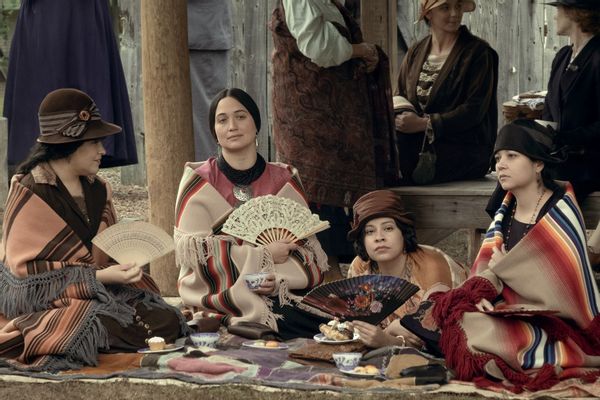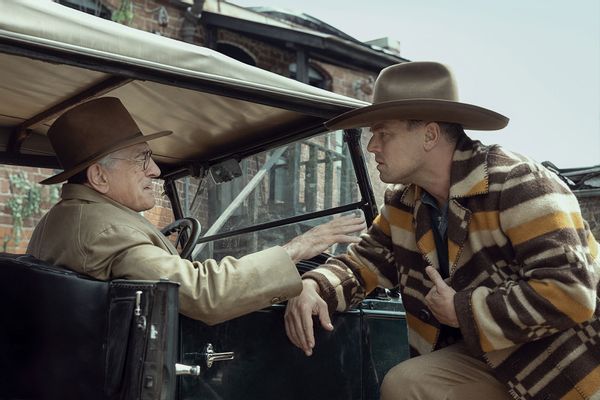
Cinema legend Martin Scorsese's next epic, "Killers of the Flower Moon," is taking on the story of Oklahoma murders in the Osage Nation during economically fraught and racially segregated 1920s America. Scorsese's film is adapted from nonfiction book of the same name written by investigative journalist and staff writer at the New Yorker, David Grann.
The book and film chronicle the story of the Osage Nation in Oklahoma, who at the time were the richest people per capita in the world because they were displaced onto and owned one of the largest deposits of oil in the United States. The Osage were so rich that they built, owned and lived in mansions, rode in chauffeured cars and sent their children overseas to Europe to study. Not at all the picture Americans have about Native American people in the 1920s.
But surreptitiously, one by one, members of the Osage Nation begin to be killed off. A rich Native woman, Mollie Burkhart (played Lily Gladstone in the film), who lives in Osage County and is married to a white man Ernest Burkhart (Leonardo DiCaprio), begins to lose her family; her sister vanishes and is killed, and then her mother, an Osage elder is poisoned. Grann said that Mollie pleaded and crusaded for justice for her dead family, but the white authorities really did nothing early on as the Osage people continued to die. In the month of May, Osage refers to the spring as the flower-killing moon – a symbol that Grann uses to symbolize the impending tragedy perpetuated into the Osage at the hands of violent, greedy white men.

White pieced together an undercover team, including the only Native American agent in the entire FBI, to infiltrate the community. The team draws in informants, bootleggers, cattle rustlers and many other people in the community to develop the investigation. Throughout the book, we learn that Mollie Burkhart and her sister who was killed were married to white men in Osage County. Ernest Burkhart's uncle, William Hale, a former cattle rancher with influence and prominence in the community is a deputy sheriff. The book details that Hale controls almost everyone and everything including the wealth of several Osage people, which was a deeply racist policy where the U.S. government imposed restrictions on Native people's wealth. They imposed a system where white guardians were placed in charge of overseeing how the Osage spent their money. There was an enormous criminal enterprise to steal Osage's money. All the guardians were often important members of society like prosecutors, businessmen and bankers. They would steal and skim from Osage funds.
The following reveals the identity of the person who masterminded the killing of the Osage, aided by others in the community. If you plan on watching the movie, these details could be considered spoilers.
As investigators continued to deconstruct the mysterious murders, they uncovered a larger conspiracy that Hale had orchestrated an extensive plot in cruelty and greed to kill off Mollie's family members and then eventually murder Mollie too with the help of the town's doctors so that they could inherit the family's fortune. Most heartbreaking and duplicitous of all, Mollie's husband Ernest had been in on the conspiracy from the beginning. White and his team of investigators confront Hale with the evidence that they collected, and Hale says that he will fight the allegations. The trial against Hale begins, and Ernest turns on Hale and testifies against him.
Hale is convicted and sentenced to life in prison for his crimes against the Osage. But Hale only served 18 years before he was paroled in the late '40s. Ernest also received a life sentence and was also paroled. Burkhart was eventually pardoned by Oklahoma Governor Henry Bellmon in 1965. In 1925, the U.S. government passed a law prohibiting non-Osage people from inheriting the land rights of tribal members who have more than one-half of Osage ancestry. In '00s, Osage Nation sued the government, alleging it had not managed the assets and paid people the royalties they were due. They settled in 2011 for $390 million.

The Osage murders are a twisted, haunted real-life tale of some of the most inhumane and monstrous crimes in American history that the country's government failed to properly investigate and prosecute the killers for their crimes. The Osage murders are just another part of American history that insidiously depicts the hardships and trauma inflicted on the Native peoples in this country. As we have finally rectified our twisted celebration of Columbus Day and have begun to uplift Native voices during the renamed Indigenous People's Day — it's crucial now more than ever that we don't let the horror stories of Native Americans be ignored or erased by the "victors" of history who are given the opportunity to rewrite history as they desire.
"Killers of the Flower Moon" is in theaters Friday Oct. 20.






